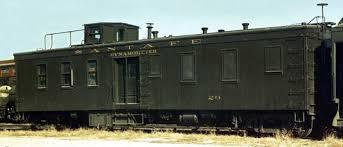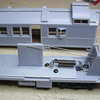I am most curious about this new feature on the VL Niagara..
Replies sorted oldest to newest
That's an innovative idea. We'll certainly discuss it.
Like this miniature tension/compression load cell, (but not as hefty in construction or price)? ![]()
https://www.omega.ca/pptst_eng/LCM201.html
Well, now - this coupler I like. Some gizmos make sense (this idea); some do not (disappearing coal load). We have to be choosy.
But - I have a question: in the past, I have spoken of this laboring idea with others, that is, varying the laboring sounds when the engine is doing increased/decreased labor: pulling a heavier/longer train, going around long curves and going up, or down, grades, and it always seemed to me that a "simple" bit of software that reads the amperage of the motor/motor driver - how hard it's working - could talk to the engine sounds software and change the bark/exhaust sounds.
This would seem to me to be a software solution, not requiring special couplers or special hardware. What am I missing?
BTW, I used to be a computer programmer - but not this kind - so I am aware that software can be anything but "simple".
I can think of so much that can happen with this. Way cool Lionel.
My question is other than the method of operation through this coupler, how is this going to be different than "Dyna-chuff"?
I think former computer programmer might be right. The motors "know" the load they are under after all. The problem is lionel uses a tachs method to get the motor speed and keep them in line with the engine speedometer setting. So they;d have to get feedback into the control system on how much the motors are under load. maybe not in their design now and the coupler is easier for them to get the info.
I believe although I'm not absolutely sure of it -- that in the DCC world they've had load based sound changes. Seems I've seen that... but can't be sure. DCC that I'm aware mostly uses the so called back emf rpm mthod (where the motor "coasts" for a moment and acts generator which can be used to derive motor speed) -- and so might already have all the circuits and info they need there for this sort of thing...
Anyway, just conjecture on my part...
Big Jim posted:My question is other than the method of operation through this coupler, how is this going to be different than "Dyna-chuff"?
My experience with Dyna Chuff is the volume is reduced when the throttle is reduced. Otherwise it is loud when accellerating and maintaining constant speed. It doesn't get labored when going up a hill or rounding a curve.
As for Back EMF, a motor is acting as a generator as long as it is spinning. It produces a voltage opposite to the applied voltage but never quite equals it. The greater the load the greater the difference between the applied voltage and the generated or back voltage.
Pete
Here I found one ... http://mrr.trains.com/news-rev...-4-dcc-sound-decoder
"[after setting it] ... when the locomotive went uphill or started with a train, the chuffs got louder and heavier. When the locomotive headed down a steep grade, the chuffs trailed off to barely audible hisses, while the rod clanks got louder. I could manually control the chuff intensity using the Johnson bar up or down functions. Version 4 also features new prototype recordings taken from both standard and narrow gauge prototypes. The decoder has a total of 60 whistles, 40 bells, and 9 exhaust chuff options."
I don't think this new feature has anything to do with the coupler, per say. It was demonstrated to me by holding back the tender a bit. Hard to hear through all the background noise in the Orange Hall, but it was there.
Its on the drawbar
D500 posted:...This would seem to me to be a software solution, not requiring special couplers or special hardware. What am I missing?
You're missing the special hardware that converts the current to a voltage (proportional to current). Yes, this can be as simple as a resistor but there are other sensing techniques/components too. There are tradeoffs to using "just" a resistor vs. surrounding the resistor with additional components to make the measurement sensor voltage more compatible with a typical microcontroller running the magic software. Before you know it you've added 25 cents in components and increased board real-estate which can be a deal-breaker.
"You're missing the special hardware that converts the current to a voltage (proportional to current). "
Ah - interesting. Reasonable - I know that the motors "know" that they are under load, but getting this info to the software is the part about which I know little.
I've tried to make my own with limited success. Not being a hardware person, this is major stumbling block. I did make up a circuit which might work ... (might!) ... that feeds voltage from the motors into an A to D, which feeds into a small CPU. I believe I used a rectifier, to a big resister divider to A&D to serial line to CPU. But I was guessing at it. Good news though, it doesn't explode.
Its been a few years but I have used SRT strain gauges for similar measurements. They are made of resistive metal that changes resistance, albeit very small changes, in response to being stretched or compressed. You use them in one or two legs of a wheatstone bridge. They were commonly used to measure the tensile strength of materials. I was using them to measure blood pressure. They were replaced with piezo elements (crystal). Here is a pic of an SRT metal strain gauge. They come in various sizes and simply glued to a surface.
Pete
Attachments
Another use for a force coupler would be to drive a motor in a "B" unit. It would follow another powered unit as a slave without any electrical connection. It could work in both directions. It would stay in sync without any adjustments.
Doesn't DCS do this already ?
The simplest force sensor is a spring.
The Walthers dynamometer car used such "technology". Needle moved proportional to drawbar pull/force. A spring fish-scale is an inexpensive DIY tool to measure engine drawbar pull. But analog. ![]()
That you can now buy $10 digital postage and fish scales that are remarkably accurate suggests it should be practical to offer this in model trains - with the data available to a processor to effect behaviors like Lionel VL.
Attachments
Interesting stuff but I think it can all be done with the motor control system.
Severn posted:Interesting stuff but I think it can all be done with the motor control system.
If that's all that it is doing...
The reason I could think for going external is no hardware change if the circuitry isn't there on the boards now to measure the motors power -- and we know they use (at least) an external tach reader. And so instead it might be easier, cheaper to provide an "input pin" and some software changes while using existing electronics with an external source of info on the load.
But someone said they put a load on the back of the tender itself (not the coupler was my interpretation) -- and this invoked the behavior... so maybe it is the motor control approach.
Or maybe that's the mock up for the show (proof of concept), and the product in development will differ... etc...
As I said, DCC seems to definitely have sound keyed to load or some boards do it & they use just motor control.
Wow, really interesting idea.
When Legacy features were first announced circa 2007 I interpreted from the description at that time that Legacy engines would have this feature - my ignorance. Alas, dyna-chuff is actually a function of setting momentum and train brake, which while neat is all simulated by the giant hand. But now, if I understand what force coupler feature is an engine will respond prototypically to the load its pulling, and in theory sounds of labored engine will also be triggered automatically when encountering a grade or less effect when going down a grade but speed control will still hold constant velocity. If I am right in my interpretation this could be the greatest feature since the steam whistle was introduced in 1935.
Paul Kallus posted:When Legacy features were first announced circa 2007 I interpreted from the description at that time that Legacy engines would have this feature - my ignorance. Alas, dyna-chuff is actually a function of setting momentum and train brake, which while neat is all simulated by the giant hand. But now, if I understand what force coupler feature is an engine will respond prototypically to the load its pulling, and in theory sounds of labored engine will also be triggered automatically when encountering a grade or less effect when going down a grade but speed control will still hold constant velocity. If I am right in my interpretation this could be the greatest feature since the steam whistle was introduced in 1935.
Paul
That's the gist of it. I think this is a pretty cool feature. It should impact labor sounds, smoke, and fuel consumption (via the Legacy remote readout).
From Lionel's website...













